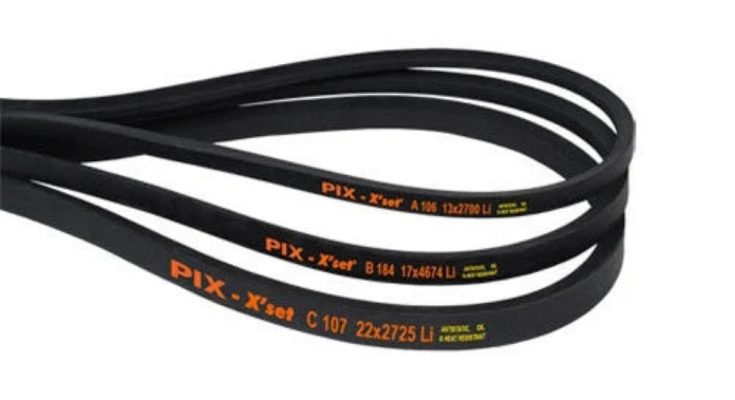When it comes to efficient power transmission in compact systems, the poly V belt has proven to be a game-changer. From automotive components and HVAC systems to industrial conveyors and household appliances, these belts offer the perfect blend of flexibility, grip, and high-speed capability.
As machines get smaller and faster, industries are increasingly shifting from traditional V-belts to multi-ribbed belts like the poly V belt drive system. This evolution is driven by the need for more compact designs without compromising on performance.
What Is a Poly V Belt?
A poly V belt — also known as a multi-ribbed belt — combines the flexibility of flat belts with the grip of V-belts. It features multiple longitudinal ribs running along the belt’s surface, which engage with corresponding grooves on the pulley. This ribbed structure allows for high torque transmission in systems where space is limited.
Benefits of using poly V belts:
- High-speed power transmission
- Smooth, vibration-free operation
- Excellent load distribution across multiple ribs
- Compact and lightweight design
One of the common types used in industries is the PK belt, where “PK” refers to a specific profile and pitch of the belt ribs — often found in automotive engines, power tools, and modern machinery.
Applications of Poly V Belt Drive Systems
The poly V belt drive system is ideal for applications requiring high efficiency, minimal slip, and quiet operation. Because the belt can bend easily around small pulleys, it’s often used where space-saving is critical.
Key industries and applications include:
- Automotive: Engine drives, alternators, power steering
- Textile and printing: High-speed rollers and feeders
- HVAC: Blowers, compressors, and fans
- Agriculture: Compact equipment with high power demands
- Home appliances: Washing machines, dryers, and mixers
These systems also perform well in continuous-duty cycles, making them ideal for industrial automation.
Choosing the Right Poly V Belt
While poly V belts come in various profiles and materials, choosing the right one depends on your machinery’s load, speed, and operating conditions.
Some things to consider:
- Rib profile (PK, PJ, PL, etc.)
- Operating temperature and environment
- Material: Rubber vs Polyurethane
- Pulley dimensions and belt length
Working with experienced poly V belt manufacturers is essential to ensure the belt matches your application. A mismatch can lead to premature wear, belt noise, or performance issues.
Rubber vs Polyurethane: Which is Better?
Rubber is the standard material for most poly V belts, but polyurethane cord and polyurethane-based belts are gaining popularity due to their higher resistance to oil, chemicals, and abrasion.
Polyurethane cord is used in specialised applications where belts need to be lightweight, cut to length, or welded on-site. They’re often used in conveyor systems, light-duty power transmission, and machines with frequent belt changes.
Benefits of polyurethane belts and cords:
- Customisable lengths
- Long service life
- Better resistance to harsh conditions
- Suitable for clean-room and food-grade applications
Advantages of Sourcing from Trusted Manufacturers
Not all belts are created equal. The performance of a poly V belt depends not just on design but also on the quality of materials and manufacturing precision. That’s why sourcing from reputed poly V belt manufacturers is critical.
What to expect from a reliable supplier:
- Accurate belt profiling and dimensions
- High-tensile strength cords
- Quality raw materials (rubber or polyurethane)
- Fast delivery and consistent stock
- Technical support and after-sales service
Additionally, when working with a good supplier, you can often get guidance on custom solutions, proper installation techniques, and preventive maintenance tips.
Maintenance Tips to Maximise Belt Life
Even the most advanced belt will wear out if not installed or maintained correctly. Here are a few tips to extend the life of your poly V belt drive:
- Ensure correct pulley alignment
- Maintain proper tension — not too loose, not too tight
- Keep the belt and pulleys clean from oil and dust
- Avoid using damaged pulleys or worn-out belt guides
- Check for cracks, fraying, or uneven rib wear during routine inspections
Regular maintenance helps reduce downtime and saves on replacement costs.
Compact, efficient, and powerful — the poly V belt is one of the most reliable solutions for modern power transmission needs. Whether you’re setting up a high-speed machine, upgrading your engine system, or designing a compact drive, a quality poly V belt can make all the difference.
For businesses seeking durable, performance-tested poly V belts, PK belts, or even specialised polyurethane cord solutions, choose a trusted name among India’s leading poly V belt manufacturers. They offer solutions designed to keep your systems running smoothly and efficiently.




